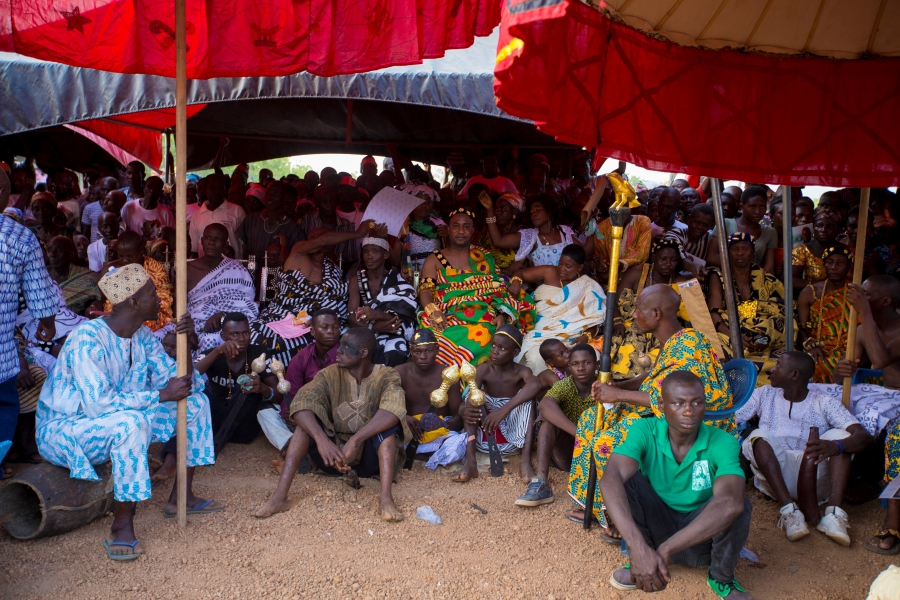History of Abease Kingdom
Abease Traditional Area is situated in the Pru West district of the Bono East region of Ghana, with its paramount seat at Abease. It is located on the Prang Kintampo highway, and has over 44 towns and villages covering a very vast landmark. The notable towns and vilages include Papaase, Adaprase, Bupe, Komfuorkrom, Ohiampe, Buom/Benim, Krobo, Kamampa, Damankwanta, Kyirimbo, Zabrahma, Fowoman etc, The traditional council shares its boundaries with Prang, Atebubu, Nkoranza/Kintampo, Yeji etc.
The royal house of Abease traces the date of their settlement to the 1740s. Abease was founded by the successor of Ayokohene of Bono Manso after the destruction of Old Abease. The old Abease was located in Kintampo area to the north of Bono Manso The traditions note that on one faithful Fofie (Friday) when their leader, Nana Kokoroko Nyomakwa, was performing rituals at a shrine, the Ashanti invaded Bono Manso (Techiman as successor) in 1723. Nyomakwa and his people filed to Nwoase near Kintampo where they stayed for some time before moving southward to Pepaase where where Nana Kokoroko died.
As they continued with their search for permanent abode for setlement, the Abease people arrived at Dromankesse where their queen, Nana Takyiwaa Nkomprew also died. A section of the group was left at Dromankesse to guard the late queen's tomb. The people later settled at Pepaase, from Pepaase, they settled permanently on the present Abease land following its discovery by Asua Kai, a hunter and a son of Nana Kokoroko. At Abease, they met the Nchumuru peopie who were the aboriginal inhabitants. The Bono Manso people outnumbered their hosts. This made the latter anxious. They felt they might lose ownership of their land and wealth.
History of Abease Kingdom cont.
The best option avalilable to them was to sign a peace of treaty with the immigrants The treaty was symbolized by three mounds. The first mound stood in the name of the Nchumuru people, in it, they planted bodua (tail of a bull) and hyire(white clay). The second mound represented Asua Kai and his people, a poma(walking stick) was planted in that mound. The third mound, which represented the people of Bono Manso contained tubena(handle of a gun) and sikanmma (knife). These two items., according to elders of Abease signified an end to war. After the peace treaty, Asua Kai assumed office as caretaker chief and remained regent until Nana Kofi Takyi was installed the substantive chief.
The name Abease is said to have evolved from the well wishes the people offered to their first chief when they settled at the final destination. In line with tradition, when a chief is installed, his subjects go and greet him and wish him well The traditions say, as the people took turns to greet the chief, they declared in Twi, Nana "Waba a tena ase". meaning Nana "live long", It is the condensed fom of the expression "Aba a tena ase" that became Abease. However, another school of thought indicates the the name Abease might have evolved from "Abe", name of the deity of abariginal Nchumuru people.

The Throne of Omanhene of Abease
